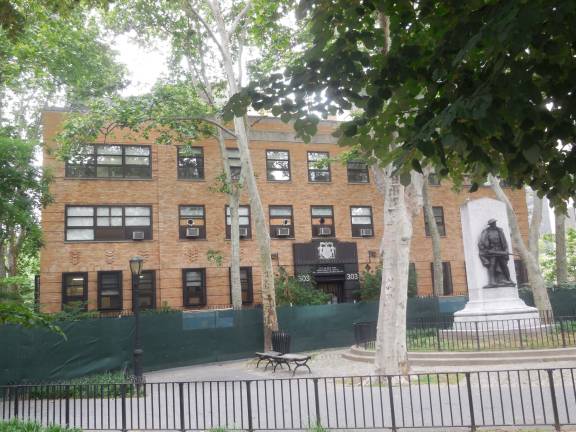the roots of the chelsea health center Chelsea History

When it was closed for renovations, the Chelsea health center on 9th Avenue was one of the busiest health clinics in the city.
Specializing in the treatment of sexually trasmitted diseases, the Leona Baumgartner District Health Center, as it’s officially known, will be closed for renovations for two to three years, a source of protest given that Chelsea currently has the highest rate of syphilis infection in the city – and, according to some reports, in the nation.
However, the center wasn’t always just an STD clinic. Its functions have changed over the years, in line with city health policy and budgetary concerns.
Its roots are in the early decades of the 20th century, when hundreds of thousands of New Yorkers lived in cramped tenements with little light or air. Often, these families were taken care of by immigrant mothers who knew little about health care or nutrition. Periodic epidemics of disease like polio, tuberculosis and influenza claimed many lives, especially those of children. In those days, much of Chelsea was considered a slum.
It was in this atmosphere that Mayor Fiorello LaGuardia announced plans for eight district health centers in 1934. In 1935, the city filed plans for a three-story clinic on 9th Avenue and 27th Street, at a cost of $175,000.
The Chelsea health center, the third to be completed, was dedicated on July 14, 1937. In his speech, LaGuardia insisted that he shouldn’t be praised for building the center – it was President Franklin D. Roosevelt’s New Deal, he said, that made it possible.
While material about the evolution of the health center is somewhat hard to come by, at a certain point its main function became an STD clinic. Bob Trentlyon, a longtime Chelsea community activist, remembers. “When I moved into the neighborhood (in the 1950s), everybody called it `the V.D. (venereal disease) Clinic,’ although later on, it offered other things,” he remembers.
During the AIDS crisis the use of the STD clinic skyrocketed. One of the anti-AIDS programs the center planned to offer, however, proved controversial. According to the New York Times of Nov. 2, 1988, the late David Smith, longtime president of Penn South, protested against the Health Department’s plan to put a “needle exchange” for IV drug users in the building. While emphasizing that most of the people he represented were not “NIMBY” types, he pointed out that a location next to an elementary school (P.S. 33) might not be the right place for such a program.
In 2002, the health center was renamed after Dr. Leona Baumgartner, a prominent physician, health educator and the first woman to head the city’s Health Department. In its official announcement, the Health Department announced that in addition to the STD clinic, it had renovated its TB clinic at the site. Furthermore, it would open a “completely renovated” dental clinic by the following year, and would continue to give shots for the flu, tetanus, hepatitis and other diseases.
Today, the community looks forward to the reopening of the clinic, which will enable it to provide more, improved services, while preserving the clinic’s original Art Deco exterior appearance.